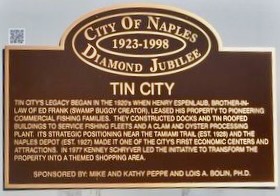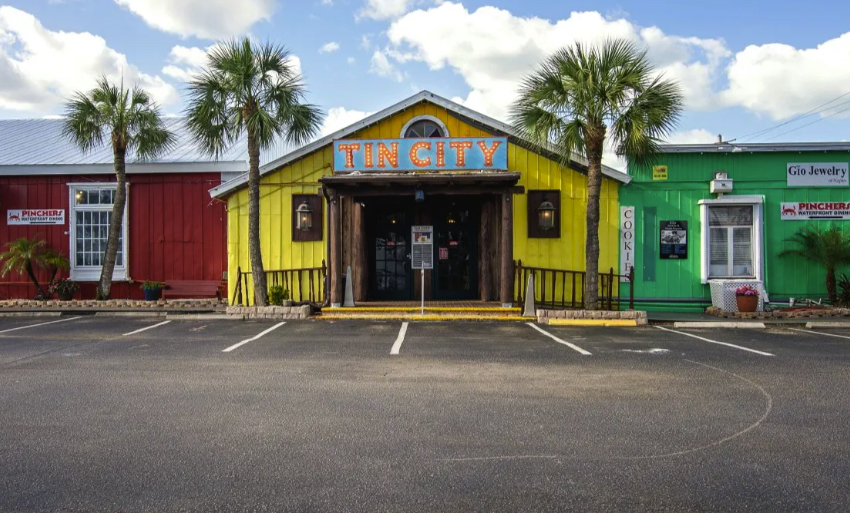Long before tourists strolled its boardwalks, Tin City’s waterfront played a crucial role in Naples’ development. This historic district has reinvented itself multiple times while preserving its maritime heritage. Let’s explore this Naples landmark.
Native American Roots
The story of Tin City’s waterfront begins with the Calusa Indians in the 1500s. These skilled fishermen were drawn to the area’s rich oyster and clam beds, establishing a tradition of maritime commerce that would define this location for centuries to come.
Birth of a Waterfront
The late 1860s marked the arrival of Roger Gordon and Joe Wiggins, whose names live on in the nearby Gordon Pass and Wiggins Pass. These early settlers established camps serving travelers, setting the stage for Naples’ future development.
The Transformation
Begins Several key developments shaped Tin City’s evolution:
- 1880s: Back Bay (now Crayton Cove) becomes the primary entry point for wealthy tourists and investors
- 1887: Construction of the Naples Pier improves access to the area, attracting notable visitors including: Thomas Edison, Harvey Firestone, as well as Hollywood stars like Greta Garbo, Gary Cooper, and Hedy Lamarr
The Golden Age of Commercial Fishing
The 1920s marked Tin City’s emergence as an economic hub:
- Henry Espenlaub (brother-in-law of Swamp Buggy creator Ed Frank) leased the property to commercial fishing families
- Tin-roofed buildings and docks were constructed to support:
- Fishing fleets
- Clam processing operations
- Oyster processing facilities
- Boat construction and maintenance

Strategic Location
Tin City’s importance grew thanks to its proximity to:
- The Naples Depot was built in 1927 by the Seaboard Airline Railroad, creating the first passenger station in Naples
- The Tamiami Trail (completed 1928)
From Industry to Tourism
The 1970s brought significant change to Tin City:
- 1977: Kenny Schryver leads the transformation from industrial space to shopping destination
- Seven original buildings are renovated to create the Old Marine Marketplace
- The development maintains its maritime character while adapting to tourism
Tin City Today
The district now offers:
- Over 30 unique boutiques
- Two waterfront restaurants
- An ice cream parlor
- Water and boating adventures
- Shopping experiences from maritime gifts to local fashion
Preserving History
What makes Tin City special isn’t just its shops and restaurants – it’s the connection to Naples’ maritime heritage. The tin roofs, wooden boardwalks, and waterfront views remind visitors of the area’s beginnings as a fishing village.
The district preserves:
- Original architectural elements
- Historic waterfront character
- Connection to the Gordon River
- Working waterfront atmosphere
Beyond Shopping
Tin City offers more than retail therapy:
- A look into Naples’ development
- Views of waterfront activities
- A slice of Old Florida
Looking Forward
As Naples continues to grow, Tin City stands as a reminder of our community’s maritime roots. Its transformation from industrial hub to tourist destination shows how historical preservation can coexist with modern development.
While today’s visitors might come for the shopping and dining, they leave with something more – an appreciation for the character and history that makes Naples special. Whether you’re a first-time visitor or a longtime resident, Tin City offers an opportunity to experience a piece of Old Florida while enjoying modern amenities.
Tin City is one of the many stops on the Naples Trolley Tour.
